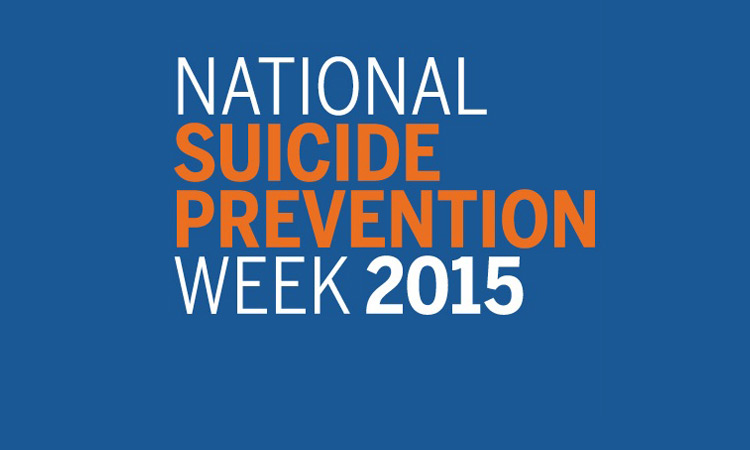 National Suicide Prevention Week runs from September 7th to the 13th, focusing on the theme “Preventing Suicide: Reaching Out and Saving Lives.” Suicide is a major cause of death around the world and is highly preventable. Suicide claims approximately 1 million lives worldwide each year. In the United States, there is a suicide every 12.8 minutes.
National Suicide Prevention Week runs from September 7th to the 13th, focusing on the theme “Preventing Suicide: Reaching Out and Saving Lives.” Suicide is a major cause of death around the world and is highly preventable. Suicide claims approximately 1 million lives worldwide each year. In the United States, there is a suicide every 12.8 minutes.
I don’t have a fondness for math, but these statistics mean something to me. Research shows that for every suicide, 115 people are impacted. And 25 of those people will go through an extremely difficult time, experiencing deep bereavement and major life disruption. That means every 12.8 minutes, one person dies and the lives of 25 more people are forever changed and monumentally disrupted.
I have loved ones who have gone through the experience of losing someone to suicide. I’ve seen them struggle in the aftermath, grieve, and feel permanently changed. These bereaved individuals are called “Loss Survivors.” Loss survivors understand something important – that suicidal despair doesn’t only impact the depressed and suicidal individual. It affects the people around that person and creates a ripple effect of—and this is the most important word — preventable suffering.
We are a society of talkers and communicators, but we tend to clam up when it comes to suicide. Most people confess that they don’t know what to say, what to do, or how to respond to the topic of suicide. It’s a scary and unwieldy subject and people tend to avoid it.
Looking the other way and “hoping things work out” are bad strategies for preventing suicide. When I started writing this article, I could feel my own resistance and fear. The topic is a thorny one, and I didn’t want to mess it up. The discussion could take a frightening turn, and I didn’t want to be responsible for that. My own hesitance mirrors what happens in relationships, in the media, and in society. We are afraid, and we go silent. That silence is lethal.
Awareness and access to help can make all of the difference. It’s important to know risk factors and warning signs, and it’s all the more important to communicate and to make assistance and treatment available.
There is an entire constellation of reasons and risk factors when it comes to suicide, including substance abuse, social isolation, job loss, relationship ruptures, mental health problems, medication issues, childhood abuse, a family history of suicide, parental pressure, extreme educational stress, impulsivity and so much more.
In my discussions with experts and loss survivors, they repeatedly cautioned against assuming any one cause might be the only reason for someone to take his or her own life. Typically, multiple factors are involved. Suicidologists also stress two main points: there are warning signs and suicidal ideation can happen to anyone.
Loss survivors often grapple with a feeling of shock and disbelief, ultimately coming to the conclusion that no one is completely immune. Maelani Bird, one such loss survivor, said, “Don’t ever think it can’t happen to your family.”
Maelani Bird knows all too well that suicide can happen to anyone. The knowledge of that fact provides the motivation to work toward prevention.
What should you watch for when looking for warning signs? One simple acronym can help you remember: “IS PATH WARM” If you notice these signs, the person might be at risk for suicide:
I Ideation (suicidal thoughts and expressions)
S Substance abuse
P Purposelessness
A Anxiety
T Trapped
H Hopelessness
W Withdrawal
A Anger
R Recklessness
M Mood changes
If someone you know is exhibiting some or all of these signs, tell someone and make sure you offer access to trained helpers. We can become aware, we can communicate, and we can help each other.
If you need to talk to someone, call 1-800-273-TALK (8255).
Preventing one death means positively impacting a total of 26 lives. That’s the kind of math I like.
Click here to find out about Rose’s thoughts on wellbeing and health


